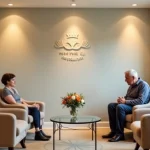Every cityscape is a panorama of rooftops. But imagine if, instead of heat-absorbing tar, concrete, and metal, you saw a vista of green roofs brimming with plants and life. Urban roof gardens can offer a lot more than aesthetics. They represent a significant opportunity to transform our buildings, enhance our cities, and contribute to our wellbeing and the health of the environment. This article will explore how to optimize the use of rooftop gardens in urban real estate developments.
The Benefits and Challenges of Green Roofs
Before diving into how to optimize their use, it’s essential to understand the benefits and challenges of rooftop gardens. Green roofs are not only pleasing to the eye but also bring numerous ecological and economic advantages. They can enhance air and water quality, reduce heat and noise, encourage biodiversity, and even improve the energy efficiency of buildings.
En parallèle : How to Develop Efficient Parking Solutions for Residential Complexes in Dense Urban Areas?
However, these rooftop gardens present certain challenges. They require a substantial initial investment and ongoing maintenance. Also, not all roofs are suitable for greening, and careful design and engineering are needed to ensure the roof structure can support the weight of the soil, water, and plants.
Design Considerations for Rooftop Gardens
The design of a rooftop garden plays a crucial role in its success and sustainability. It starts with selecting the right plants. The plants should be able to withstand the roof’s harsher conditions compared to ground-level gardens. Succulents, grasses, and perennial flowers are often good choices.
Sujet a lire : How to Design Flexible Workspaces in Commercial Properties to Attract Small Businesses?
The soil layer is also of paramount importance. It should be lightweight yet capable of retaining water and nutrients. Furthermore, the installation of an efficient water management system is critical to prevent overwatering or underwatering.
Aside from ecological considerations, the design should also cater to human enjoyment and relaxation. Incorporate seating areas, walkways, and features such as pergolas or water elements to create an appealing urban oasis.
Incorporating Green Roofs into Urban Real Estate Developments
For real estate developers, incorporating rooftop gardens into urban buildings can enhance the appeal and value of their projects. However, it requires careful planning from the early stages of the development. Consider the load-bearing capacity of the building, the local climate, and the potential end-users’ needs and preferences.
Engage with skilled professionals such as architects, landscape designers, and engineers who are experienced in green roof installations. They can help create a robust and effective design that not only looks good but also functions optimally.
Ensuring the Longevity and Performance of Rooftop Gardens
Ensuring the longevity and performance of a rooftop garden involves regular maintenance and monitoring. This includes watering, pruning, fertilizing, and checking for pests and diseases.
Monitor the health of the plants and the condition of the soil regularly. Also, keep an eye on the roof’s structural integrity, especially after heavy rains, to detect any potential issues early.
Consider employing a professional garden maintenance company, especially for larger or more complex installations. They have the necessary expertise to keep the garden in top condition and ensure it continues to deliver its benefits for many years.
Promoting the Adoption of Green Roofs in the City
Promoting the adoption of green roofs in the city requires a combined effort of governments, real estate developers, architects, and the general public. Cities around the world are already encouraging green roofs through regulations, incentives, and education.
Government initiatives can include providing financial incentives for green roof installation or implementing building codes that require a certain percentage of roofs to be green. On the other hand, real estate developers and architects can advocate for green roofs by incorporating them into their projects and promoting their advantages.
Educating the public about the benefits of rooftop gardens and how they can contribute to a healthier and more sustainable city is also crucial. This education can take various forms, from workshops and seminars to brochures and online resources.
Through concerted efforts, we can optimize the use of roof gardens in urban real estate developments and transform our cityscapes into vibrant, green, and life-enhancing spaces.
The Role of Rooftop Farms in Urban Areas
In urban areas where space is a premium, rooftop farms can serve as a viable solution. They present an opportunity to grow fresh produce in the heart of the city, contributing to urban agriculture and enhancing food security. These farms can help reduce the need for transportation of food, thereby reducing carbon emissions and promoting sustainability.
Rooftop farms require a careful selection of crops that can thrive in the specific microclimate of the rooftop. Lightweight and water-retaining growing mediums are essential to support plant growth without overburdening the roof structure. Drip irrigation systems can be used to ensure an optimal water supply while minimizing water loss due to evaporation.
Maintenance of rooftop farms is more labor-intensive compared to conventional ground-level farms. However, the benefits they deliver in terms of fresh produce, improved air quality, and reduced urban heat island effect make them worth the effort. Local communities can be involved in the maintenance and harvesting of produce, creating a sense of ownership and promoting community bonding.
The integration of rooftop farms into urban real estate developments can create unique selling points for developers. Prospective residents and tenants may be attracted by the prospect of having access to fresh, locally grown produce. This can increase the property’s value and appeal, contributing to its marketability and profitability.
The Impact of Green Roofs on Energy Consumption
Green roofs can significantly reduce energy consumption in buildings. They act as a natural insulator, reducing the amount of heat that enters the building during summer and retaining heat during winter. This results in lower energy required for air conditioning and heating, leading to cost savings and reducing the building’s carbon footprint.
The extent of energy savings depends on the type of green roof – extensive or intensive. Extensive green roofs, with a thinner layer of soil and low-growing plants, are easier to install and maintain but offer less insulation than intensive green roofs. On the other hand, intensive green roofs, with a thicker layer of soil and a diverse range of plants, require more initial investment and maintenance but provide more significant energy savings.
Regardless of the type, green roofs should be integrated into the building’s design from the onset. This requires collaboration between architects, structural engineers, and landscape designers to ensure the roof’s ability to support the load and function optimally.
Conclusion
Green roofs offer a myriad of benefits, transforming tar paper roofs into vibrant green spaces. From improving air quality to reducing energy consumption, these roofs are not just an aesthetic addition but a crucial element in improving urban life. Despite the challenges, like the initial cost and maintenance, the long-term benefits green roofs provide to the environment, inhabitants, and real estate developers are undeniable.
Rooftop gardens and farms are also contributing to urban agriculture, providing fresh produce right in the heart of the city. As more urban areas recognize the potential of these green spaces, we hope to see an increase in the adoption of green roofs, transforming our cityscapes into greener, healthier, and more sustainable environments.
The journey of optimizing rooftop gardens in urban real estate developments is a collaborative effort. It requires commitment and cooperation from government bodies, real estate developers, architects, and the general public. Through education and awareness, we can collectively make the most of our rooftops, making strides toward a greener and more sustainable future.












